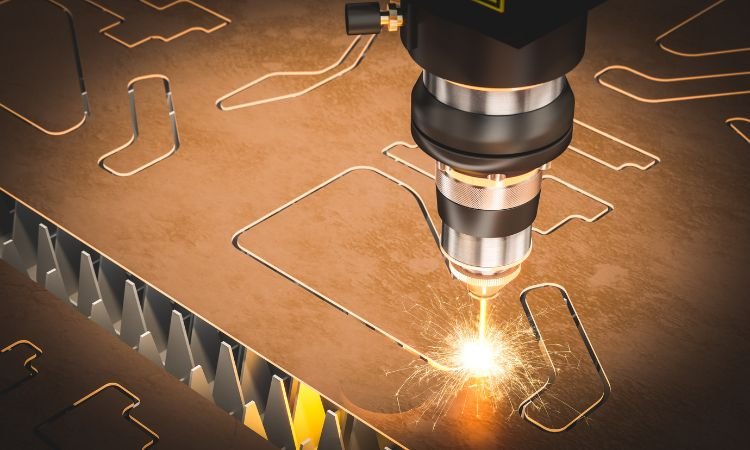Laser Engraving Machine Market: Revolutionizing the Art
The global laser engraving machine market size reached a value of more than USD 3.51 billion in 2023. This impressive figure highlights the growing importance of this technology across various industries. In the realm of jewelry making, laser engraving machines have emerged as a game-changer, offering unparalleled precision, detail, and design flexibility. This blog post delves into the fascinating world of laser engraving in jewelry, exploring its applications, benefits, advancements, and future trends.
Introduction: A Marriage of Technology and Artistry
Jewelry has always been a canvas for self-expression, a way to commemorate special occasions, and a symbol of love and commitment. Traditionally, intricate designs and personalized messages were painstakingly etched by hand, a process requiring immense skill and experience. However, the advent of laser engraving machines has ushered in a new era of precision and creativity in jewelry design.
Laser engraving technology utilizes a focused beam of light to remove material from a surface, leaving behind a permanent design. This method offers several advantages for jewelry makers:
- Unmatched Precision: Laser beams can create incredibly fine lines and details, allowing for the replication of intricate patterns and delicate lettering with unmatched accuracy.
- Versatility: Laser engraving machines can work on a wide range of materials used in jewelry making, including precious metals like gold, platinum, and silver, as well as gemstones and other hard materials.
- Repeatability: Laser technology ensures consistent results, allowing for the precise replication of designs on multiple pieces of jewelry.
- Speed and Efficiency: Compared to traditional hand engraving, laser engraving is a much faster process, making it ideal for high-volume production or personalized jewelry orders.
The Power of Choice: CO2 vs. Fiber Laser Machines
The Laser Engraving Machine Market offers two dominant technologies for jewelry engraving: CO2 and fiber lasers. While both offer their own set of advantages, fiber lasers have become increasingly popular in the jewelry industry.
- CO2 Lasers: These lasers excel at engraving on organic materials like wood and acrylic. However, for metals and gemstones used in jewelry, they can cause thermal damage, leading to melting or cracking.
- Fiber Lasers: These lasers emit light in a shorter wavelength, making them ideal for engraving on metals and hard materials with minimal heat impact. This allows for precise engraving on delicate jewelry pieces without compromising their integrity.
The superior precision and material compatibility of fiber lasers make them the preferred choice for most jewelry engraving applications.
Benefits Galore: Why Laser Engraving Reigns Supreme
Laser engraving technology offers a multitude of benefits for jewelry makers and their customers alike:
- Intricate Designs and Personalization: The ability to create intricate designs and patterns with laser engraving pushes the boundaries of creative expression. Jewelers can offer a wider variety of design options, catering to diverse tastes and preferences.
- Precision and Accuracy: Laser engraving ensures unmatched precision and accuracy when engraving on various jewelry materials. This is particularly important for intricate details, logos, and delicate lettering.
- Durability and Permanence: Laser-engraved designs are permanent and highly durable, ensuring that cherished messages and personalized details remain intact for years to come.
- Faster Production: Compared to traditional engraving techniques, laser engraving significantly reduces production time, making it ideal for high-volume orders or on-demand personalization.
- Reduced Waste: Laser engraving is a highly precise process, minimizing material waste compared to traditional methods. This not only reduces costs but also aligns with sustainable manufacturing practices.
Beyond the Basics: Common Applications of Laser Engraving
Laser engraving has become an indispensable tool for jewelry makers, with applications extending far beyond simple personalization:
- Personalization: Names, dates, initials, and special messages can be laser-engraved on jewelry pieces, creating unique and sentimental keepsakes. This caters to the growing trend of personalized jewelry, allowing customers to add a special touch to their precious possessions.
- Adding Decorative Elements: Laser engraving can be used to create intricate patterns, textures, and logos on jewelry surfaces, adding a touch of elegance and personalization. This allows jewelers to create unique design elements and brand signatures on their pieces.
- Marking and Serialization: Laser engraving allows for permanent marking and serialization of jewelry pieces. This can be used for quality control, tracking purposes, and ensuring authenticity.
Future Trends: On the Cusp of Innovation
The future of laser engraving in the jewelry industry is brimming with exciting possibilities. Here are some trends to watch:
- Increased Personalization: Customers will continue to seek unique and personalized jewelry pieces. Laser engraving will play a pivotal role in catering to this demand by allowing for even more intricate and customized designs.
- Integration with Artificial Intelligence (AI): AI-powered software could revolutionize the design process, allowing for automatic pattern generation and design optimization for laser engraving.
- Sustainable Practices: As sustainability becomes a top priority, laser engraving’s minimal waste production will become an even more attractive feature for environmentally conscious jewelry manufacturers and consumers alike.
- Emerging Materials: As new materials are introduced into the jewelry market, laser engraving technology will need to adapt to ensure compatibility and optimal engraving results.







